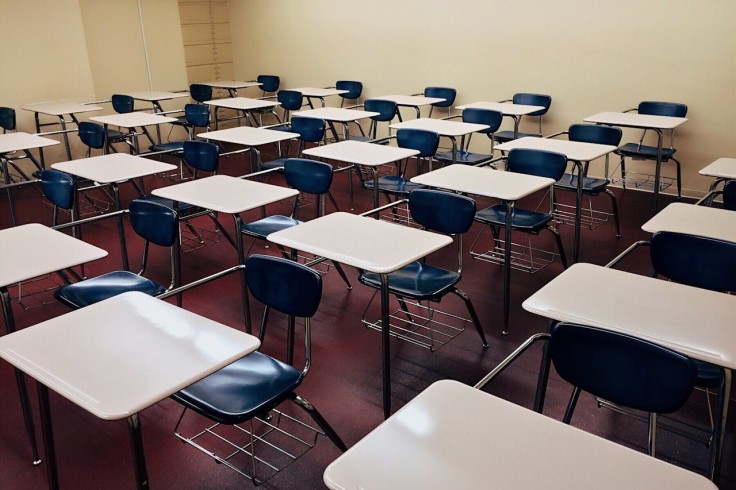
As a teacher, one of the most important things to understand is that there is no "one size fits all" approach to what you're doing. We all learn in our unique ways. Because of that, you need to rise to the level your students need you to be at. Sometimes, that means tailoring your approach to the individual.
You'll do this not only on a class-by-class basis but sometimes year after year. What works in one year might be woefully inadequate for the next, meaning you'll have to "throw out" those old best practices and start anew.
None of this means that there aren't ways that you can dramatically streamline your own teaching experience, adding as much efficiency to the classroom as possible. There are several methods that you will want to learn more about.
1. Embrace New Technologies
One of the best ways to add efficiency to a classroom environment is by embracing new technologies with open arms.
A classic example is computers in the classroom, which was controversial just a decade ago. There was a time when most classrooms in the United States were decidedly "low-tech" affairs by design. Anything more sophisticated than a graphic calculator was frowned upon and seen as a distraction.
Students would need to purchase massive textbooks and carry them all day. They'd need to create and carry a seemingly endless volume of notebooks. The list goes on and on.
Now, most of that can be replaced by something far more efficient: a computer or tablet. Every one of those books can exist on a device that students can comfortably carry around with them all day. Is the potential for distraction still there? Yes, but this is a scenario where the benefits far outweigh any potential negatives.
The same is true of something as simple as a data collection form, which has changed things in a big way in education. Again, think about the sheer volume of paper-based information that exists in a day for an average teacher. Not only does creating all those forms take up a lot of time, but they must also be stored indefinitely. If you need to refer back to one, you must go through the process of finding it. Anything that exists exclusively on paper can be lost or stolen. The problems begin to add up quickly.
With a data collection form, however, teachers get a smooth and efficient experience by design. Teachers can begin with a template and create their own custom forms, which can be used for things like permission slips. Data can be collected effortlessly and stored in a convenient, secure way that is easy to search for moving forward.
The best part is that because that data exists digitally, it can also be carefully analyzed to extract meaningful insights. Teachers can now uncover trends and patterns that they may have otherwise missed. It becomes easier to evaluate performance within the context of a test, giving teachers actionable information to make more informed decisions.
From that perspective, not only does their job become more efficient, but it also becomes more organized and effective.
2. Establish Routines
One of the best ways to add efficiency to the classroom is to make purpose-driven daily decisions. Remember that you're not adding efficiency to your life as a teacher just for the sake of it. Your only goal is not to make your life easier. There are only so many hours in a day, so you have to make the most of the available ones.
Because of that, any steps you take need to free up as much of that time as possible so that you can maximize your time for instruction. This will also have the added benefit of maximizing time for student interaction.
If teaching is an eight-hour job, it's not that you're trying to figure out a way to do it in six. Once you free up those two hours, you can devote them to more important things. If you look at the process of increasing classroom efficiency through that lens, certain strategic decisions can't help but reveal themselves.
3. Remember That You're Learning, Too
Finally, understand that adding efficiency to the classroom isn't something you do once and forget about. Think about it within the context of automating a process in a business environment. One process may have previously been made up of 10 different steps. You could get it down to five through best practices like those outlined above. That's 50% more efficient-certainly something to be celebrated.
But don't stop there. As you continue to learn, you may see a way to get that down to three. Capitalize on it. As your classroom gets more efficient, you will get better at your job. As that happens, new opportunities for even more efficiency increases will reveal themselves. This is a natural part of the process.
Remember that adding efficiency to the classroom is more than just making your life easier. Teachers can always use any help they can to get to that end. The chances are high that you're no exception. But the benefits run a fair bit deeper than that, too.
By leaning into practical tips like those outlined above, you're creating more of a precious and limited resource: time. The less time you spend on administrative tasks, the more time you devote to making the most productive learning environment possible. You'll have more time in each class to devote to individual students, giving them the personalized level of care they need to thrive.
Put another way, as your classroom becomes more efficient, it becomes more productive. That means you can help do whatever it takes to foster student success, which in and of itself is the most crucial benefit of all.
© 2025 University Herald, All rights reserved. Do not reproduce without permission.








